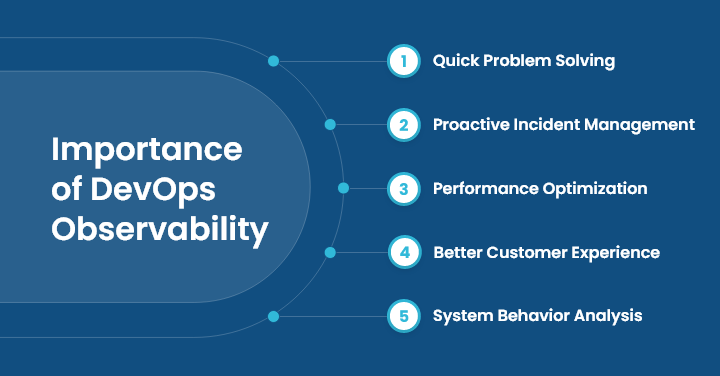
In today’s fast-paced digital landscape, maintaining high-performing and reliable systems is more critical than ever. That’s where Observability in DevOps steps in. But what exactly does it mean, and why is it a game-changer for development and operations teams?
Understanding Observability
At its core, observability is the ability to measure the internal state of a system based on the data it produces — like logs, metrics, and traces. Unlike simple monitoring, which tells you something is wrong, observability helps you understand why it’s happening and where it’s occurring.
The concept originates from control theory and has been adapted to software engineering. In DevOps, observability is crucial for detecting, diagnosing, and resolving issues before they escalate into serious problems.
The Three Pillars of Observability
Observability typically rests on three key data sources, often called the “three pillars”:
- Logs: Text records of discrete events that happen within a system.
- Metrics: Numeric measurements collected over time to monitor performance.
- Traces: A detailed record of the path a request takes through a system.
These components work together to give teams a comprehensive view of system health, performance, and behavior.
Why Observability Matters in DevOps
In a DevOps culture where rapid development and deployment are the norms, systems have become increasingly complex. Microservices, distributed architectures, and cloud-native applications demand a proactive approach to system management.
Here’s why observability in DevOps is so critical:
- Faster Issue Resolution: Quickly pinpoint problems and their root causes.
- Increased System Reliability: Catch issues before they impact users.
- Improved Collaboration: Developers and operations teams work together with shared visibility.
- Enhanced Performance Optimization: Identify bottlenecks and inefficiencies with data-driven insights.
Without observability, teams are left guessing, often leading to longer downtimes and user frustration.
How to Implement Observability in DevOps
Building an observable system isn’t an overnight task, but focusing on these steps can set you on the right path:
- Integrate Observability from the Start: Bake it into the software development lifecycle.
- Use the Right Tools: Implement solutions like Prometheus, Grafana, Jaeger, or Datadog.
- Focus on Meaningful Metrics: Collect data that’s actionable, not just noise.
- Promote a Culture of Transparency: Make observability insights accessible across teams.
Remember, observability isn’t just about tools — it’s a mindset of continuously understanding and improving your system.
Final Thoughts
In DevOps, speed without stability is a recipe for disaster. Observability bridges the gap between rapid innovation and reliable operations. By embracing observability in DevOps, teams empower themselves to build robust, scalable, and user-centric systems that thrive even under pressure.

